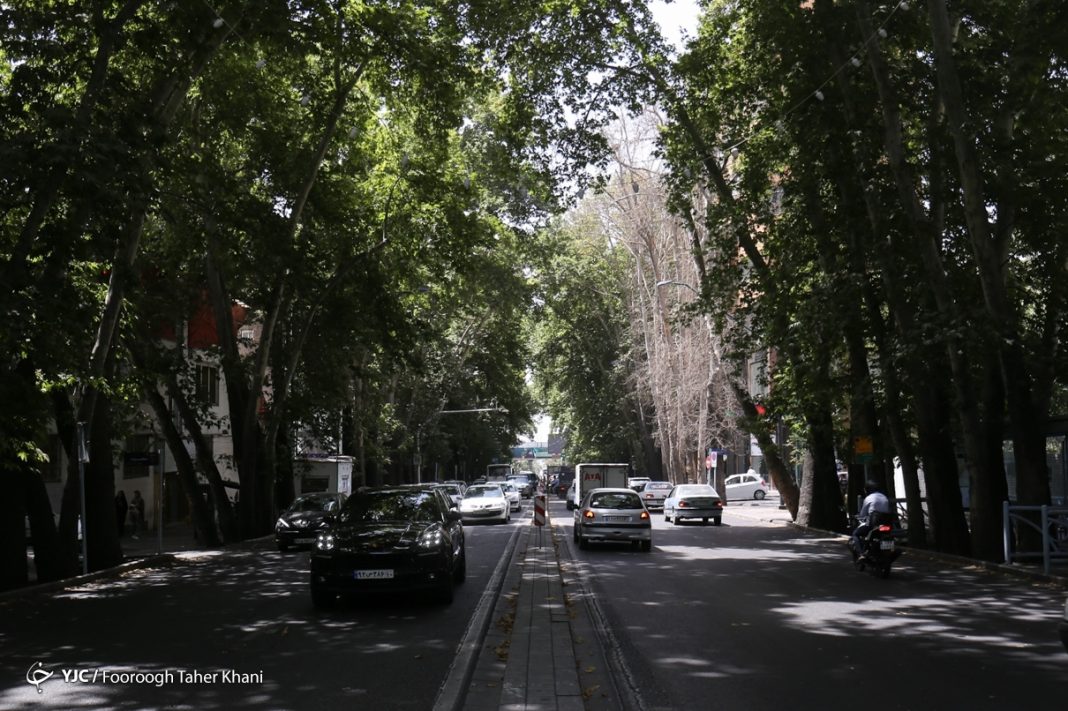Initially crafted by Reza Shah as the “Special Pahlavi Road,” it served royal commutes from the Marmar Palace to the north’s Saadabad, flanked by 24,000 plantain trees.
This route, once exclusive, faced transformations. It bore witness to wartime occupation, democratization, and urbanization.
The Allies’ wheels rolled upon its royal path, paving the way for public access. Subsequently, it evolved into the beating heart of Tehran, adorned with shops, arcades, and dwellings.
Though the street’s count of 7,000 surviving plane trees from the original 60,000 stands as a testament to resilience amid pollution and urbanization, their struggle is evident. Some succumbed to concrete encroachment or fell prey to commercial expansion. Yet, their stoic presence endures, symbolizing both perseverance and vulnerability in the face of modernity.
Beyond the trees, Valiasr Street remains a custodian of Tehran’s heritage. Parks like Mellat Park, Saei Park, and Student Park imbue the street with greenery and moments of respite amid the urban chaos.
Despite its relatively shorter history, Valiasr Street has ingrained itself as Tehran’s vital artery, echoing the essence and charm of its ancient counterparts.
Its narrative, a fusion of past opulence and present dynamism, continues to evolve, encapsulating Tehran’s enduring spirit of adaptation and endurance.
